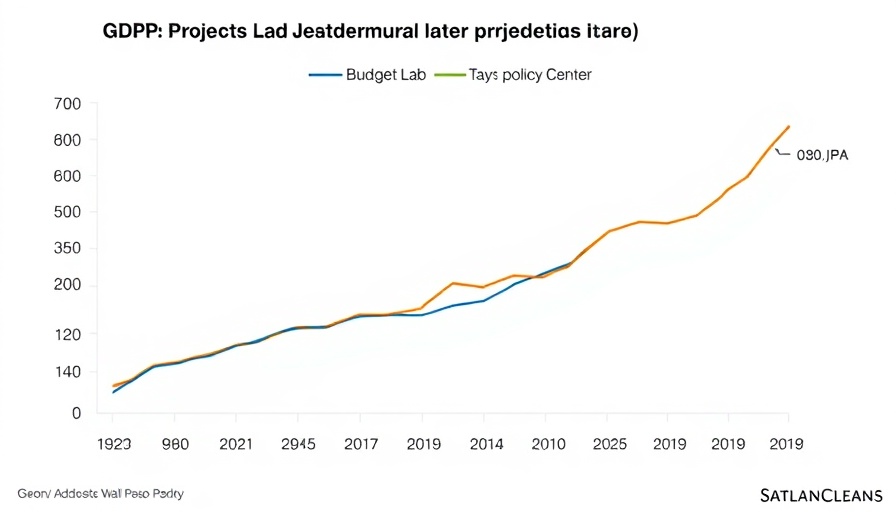
The Looming Economic Sugar High: What You Need to Know
The Committee for a Responsible Federal Budget (CRFB) has voiced serious concerns regarding the short-term economic benefits of the recently enacted One Big Beautiful Bill Act (OBBBA), calling it an "economic sugar high" that is not sustainable. According to the CRFB's analysis, while OBBBA is expected to drive economic growth by approximately 1% in 2026 through one-time incentives and increased demand, this surge is merely a fleeting moment in time.
Understanding OBBBA’s Short-Term Gains
The mechanisms behind OBBBA’s projected short-term growth are rooted in substantial government borrowing—an expected $600 billion annually from 2026 to 2028. These funds are aimed at reducing taxes on work and investment, temporarily accelerating investments from businesses. Yet, the CRFB warns that these one-time effects will vanish as the economy adjusts, especially if conditions such as full employment persist. While there may be initial successes, legislators and business professionals alike must recognize that such measures are not a long-term solution.
Short-Term Boost vs. Long-Term Stagnation
The CRFB emphasizes an important point: while some projections estimate a near-term GDP boost, the long-term outlook is far less optimistic. By 2034, this national debt—estimated to grow by approximately $4.1 trillion—could overshadow any temporary gains and lead to crowding out productive investment, ultimately resulting in stagnation.
Critical Insights and Economic Forecasts
The forecasts from the CRFB are echoed by various think tanks, including the Yale Budget Lab, which anticipate similar trajectories with only modest growth or even declines following the initial spike. The Congressional Budget Office (CBO) has echoed these sentiments, although it has yet to provide a dynamic score for the latest version of OBBBA.
Concluding Reflections
As business professionals, understanding the implications of such legislation is vital. The anticipated 'sugar high' hints at immediate market action while masking deeper issues of prolonged economic health. It emphasizes the need for strategic planning and insight into effective fiscal policies that not only push temporary growth but are indicative of long-lasting change.
Fostering a sustainable economic environment requires engagement and dialogue on these issues. Be proactive—staying informed on these fiscal policies will be crucial for navigating the changing economic landscape.
 Add Row
Add Row  Add
Add 



Write A Comment